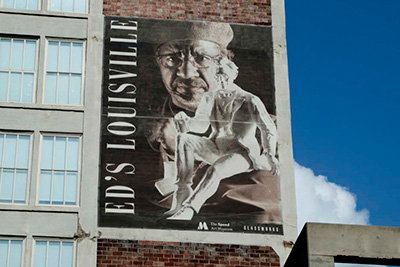“Art is not what you see, but what you make others see.” — Edgar Degas
"Yellow Villa" by Catherine Bryant, 12x9in, oil on canvas, plein air (2010), $395 | BUY NOW
Catherine Bryant’s outlook on life may best be expressed in a phrase she likes, “Art is the breath of life.” After experiencing a troubled childhood, Bryant used art to change her life, or at least get moving in a better direction. Armed with a sketchbook and charcoal, she set out to find beauty and record the wonders around her. This journey took her into a world of constant growth.
Bryant is a landscape painter, but she doesn’t restrict herself to panoramic scenes of nature. In fact, her compositions tend to be more intimate glimpses of the way the trees and vegetation frames our point-of-view on the bucolic environment. “Yellow Villa” shows the expansive view that reaches off to the horizon, the diminishing fields becoming more abstract as the distance increases, but in “The Trees Speak Softly”, the viewer feels hidden in the shade, poised to eavesdrop on whatever privileged moment might be about to transpire just beyond the trees.
Another aspect of landscape compositions is the still, unmoving aspect that is so common, but in “Warm H20” Bryant captures a spontaneous moment in time, the immediacy of the interaction between horse and human palpably communicated with certainty and skill. Perhaps it is the introduction of animals, always a favorite with this artist, that represents an opportunity to inject some modicum of unpredictability into her compositions.
"Warm H2O" by Catherine Bryant, 36x48in, oil on canvas (2015)
After a career in advertising as a Graphic Designer and airbrush illustrator, teaching classes at Ivy Tech, Bryant created her own business, working as a muralist for 25 years. Realizing she wouldn’t always want to climb scaffolding, she started honing her skills as a fine art painter.
"The Trees Speak Softly" by Catherine Bryant, 8x10in, oil on canvas (plein air), $395 | BUY NOW
Now, during the summer months, one can find the artist outdoors throughout the state of Kentucky and southern Indiana, painting “plein air” (painting outdoors). She finds “plein air” painting to be the best method for sharpening her quick decision making skills; an invaluable exercise for simplifying composition, value assessment and color acuity, all the while completing a painting in a matter of a couple of hours. These lessons carry over back in the studio during the winter months.
Ms. Bryant teaches her passion for painting at Preston Arts Center on Bardstown Road, and in her private studio.
Hometown: Louisville, Kentucky
Education: BA, University of Louisville
Gallery Representative: Jane Morgan Gallery; Edenside Gallery; Kentucky Museum of Art & Craft, and Hoosier Salon (Louisville) Broad Ripple Gallery (Indianapolis)
Website: http://www.catherinebryantart.com/
Instagram: https://www.instagram.com/catherinebryantstudio/
"1st Notes of Spring" by Catherine Bryant, 30x24in, oil on canvas, $2950 | BUY NOW
"Sweet Dreams Dear Light," by Catherine Bryant, 11x14in, oil on canvas, plein air (2016), $495 | BUY NOW
"Dance of the Texasbonnets and Indian Paintbrush" by Catherine Bryant, 48x36in, encaustic & oil on canvas (2016), $3500 | BUY NOW
Written by Keith Waits. Entire contents copyright © 2016 Louisville Visual Art. All rights reserved.
Are you interested in being on Artebella? Click here to learn more.















